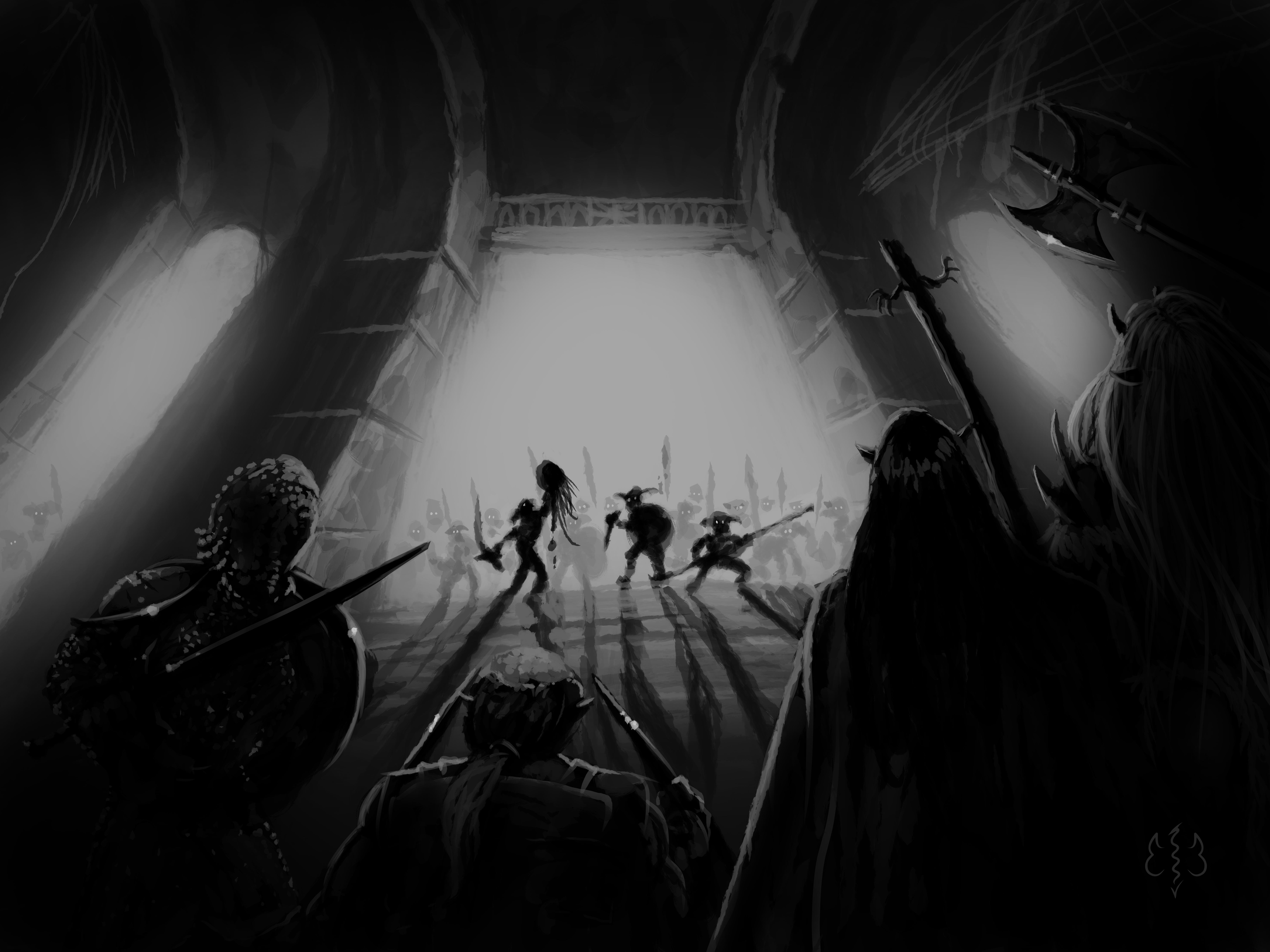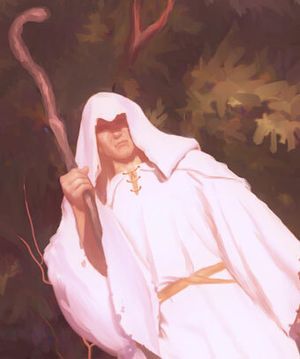Quick Encounters

There are five creature categories in Eldritch (described in full in this preview document https://bit.ly/3iFQDVp), but most random combat encounters can be dealt with simply using three of them. Decide if the opponents are minor (weak), standard (average), or exceptional (tough). They use one, two, or three dice respectively for both hit points (using MV) and potential harm. Assign a die type for rank and file (d4 or d6), and higher ones for stronger individuals or henchmen (d6 or d8) and leader types (d8, d10, or d12) if present. Determine the numbers appearing and circumstances of the encounter to suit the campaign.
For example, do you want to ambush the adventurers with a dozen scrawny bandits? As minor foes they have a single die. Most are d4 bandits with 4 hit points doing d4 points of potential harm in attacks. A d6 mage with them has 6 hit points and can inflict d6 potential harm with her spells,
their d8 leader has 8 hit points and does d8 points of potential harm. Standard foes (such as healthy bandits) would use two dice for hit points and potential harm (2d4 etc.), and so on. It’s that simple. The mechanics of such encounters are the same, but you can make them seem different by describing them differently, enlivening them and adding distinct narrative touches here and there.
For random encounters, roll d6 for category: 1–3 minor, 4–5 standard, 6 exceptional. Numbers appearing will be dN+8, dN+4, dN respectively, where dN is a die based on the character party’s average level: level 1 = d4 up to level 5 = d12 (as per the character sheet). Social creatures (men, goblins, wolves) are hierarchical: one stronger type per 8 and one leader per 12 in the group.
For role-playing encounters, a personality sketch and campaign notes should be enough, but in case of conflict, most non-combatants would be minor, and town guards and so on would be standard.creature categories in Eldritch (described in full in this preview (https://bit.ly/3iFQDVp), but most random combat encounters can be dealt with simply using three of them. Decide if the opponents are minor (weak), standard (average), or exceptional (tough). They use one, two, or three dice respectively for both hit points (using MV) and potential harm. Assign a die type for rank and file (d4 or d6), and higher ones for stronger individuals or henchmen (d6 or d8) and leader types (d8, d10, or d12) if present. Determine the numbers appearing and circumstances of the encounter to suit the campaign.
For example, do you want to ambush the adventurers with a dozen scrawny bandits? As minor foes they have a single die. Most are d4 bandits with 4 hit points doing d4 points of potential harm in attacks. A d6 mage with them has 6 hit points and can inflict d6 potential harm with her spells, their d8 leader has 8 hit points and does d8 points of potential harm. Standard foes (such as healthy bandits) would use two dice for hit points and potential harm (2d4 etc.), and so on. It’s that simple. The mechanics of such encounters are the same, but you can make them seem different by describing them differently, enlivening them and adding distinct narrative touches here and there.
For random encounters, roll d6 for category: 1–3 minor, 4–5 standard, 6 exceptional. Numbers appearing will be dN+8, dN+4, dN respectively, where dN is a die based on the character party’s average level: level 1 = d4 up to level 5 = d12 (as per the character sheet). Social creatures (men, goblins, wolves) are hierarchical: one stronger type per 8 and one leader per 12 in the group.
For role-playing encounters, a personality sketch and campaign notes should be enough, but in case of conflict, most non-combatants would be minor, and town guards and so on would be standard.
